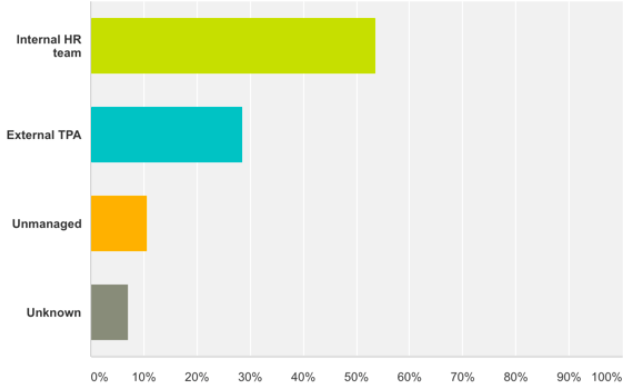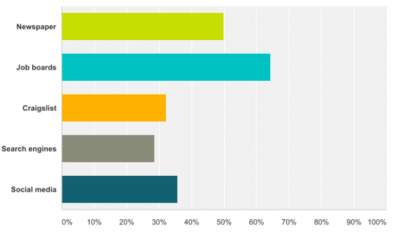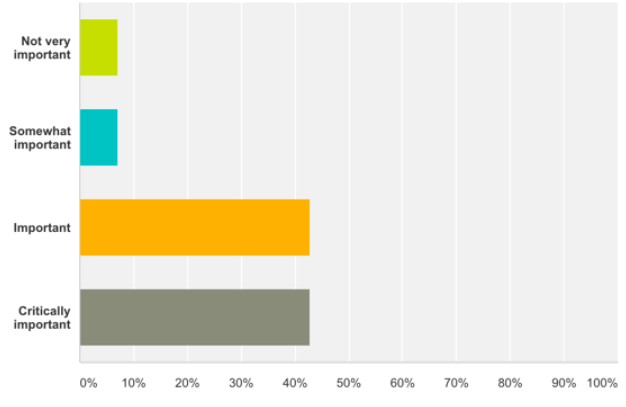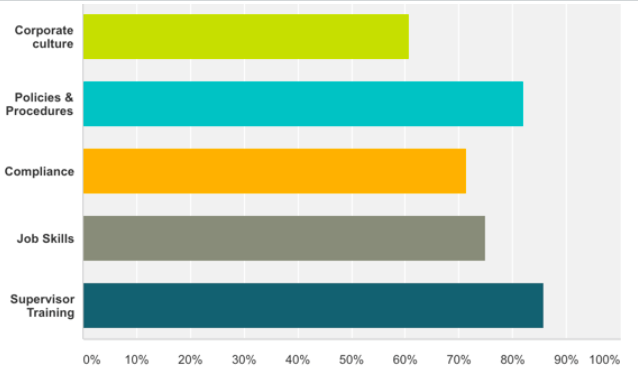Every year we invite Tribal organizations to take part in our Human Resources Risk Management survey. This survey helps shed light on existing practices and provides insight on how we can better serve you.
Our focus for this survey was on the primary areas and methods used to address risk in the employee lifecycle. These are the primary risks facing HR leaders and the core building blocks to success that, when understood and effectively addressed, establish a sustainable impact for HR. Here are our findings or you may download our e-book if you prefer.
Where Tribal Organizations Currently Implement HR Risk Management
Human resource professionals in Tribal organizations realize that to get the best candidates, it’s important to get the word out about job openings in as many ways as possible. Job boards and newspapers are used by over 50% of organizations we recently surveyed, with social media, Craigslist, and search engines not far behind.
Tribal organizations also realize the importance of a well-crafted job description and interview questions. In our survey, respondents told us that the primary ways they ensured a good employee and job match were through interviews and job descriptions. They sought to use these tools to minimize the risk of a poor hire.
Tribal organizations are also well aware that training is of vital importance when it comes to making the most of their human resource budget. Savvy human resources leaders strive to manage their scarce budgets in a way that maximizes value and minimizes loss.
As a result, they understand that training is essential when it comes to preparing employees to do well. Our findings show that 86% of Tribal organizations rated training as either important or critical.
Participants were then asked to rank the training areas that they considered vital. Supervisor training topped the list and was followed by policies and procedures.
Finally, many Tribal organizations seek to manage risk by using background checks when hiring new employees. Depending on the position, they use tools from the Gaming Commission, national background companies, and local criminal databases.
Where HR Risk Management Can Improve
Our survey did uncover significant opportunities to improve human resource risk management in most tribal organizations. These improvements can save thousands or even millions of dollars, and can help you generate big wins in your annual planning sessions.
Here are some key gaps our survey uncovered:
A Lack of Personality or FIT Testing: Very few organizations have a personality or FIT testing program in place. Unfortunately, this tendency to hire based on first impressions and subjective judgment can cost Tribal organizations significant money. The cost of turnover ranges from 40% of salary for entry level positions to 400% of salary for executive leaders.
Consider the turnover rate in your organization. How much money could you save if you had upfront testing to determine the best person for the positions you have open? How much would lower turnover contribute to profits, not just financially, but in terms of morale, continuity, and relationships?
Lack of Unemployment Risk Management. Much attention is given to the hiring, training, and developing phases of the employee lifecycle. However, many Tribal organizations don’t focus risk management techniques on unemployment. This is unfortunate because the financial costs are high for when former employees file for and win unemployment claims.
When asked about current methods of filing unemployment claims, 53% of organizations indicated that they managed their unemployment claims processes. Almost 18% or respondents either didn’t manage unemployment at all or didn’t know how it was done.

This lack of risk management has significant financial consequences:
- The direct financial cost of unemployment is between 0.5% and 6.2% of wages in Tribal organizations.
- The total cost ranges from $10,000 to $3 million per year.
- On average, 25% – 50% of these costs could be avoided with a risk management strategy.
If your organization doesn’t have unemployment risk management in place, this is a key opportunity for your organization to gain profitability.
Steps to Managing Human Resource Risk
Now that you understand the significant costs of not having proper risk management, it’s time to take some steps to manage risk throughout the employee lifecycle. Here are a few to consider:
- Perform an HR Audit or Employee Climate Survey to determine where losses are occurring
- Determine where in the employee lifecycle these losses occur
- Acquire the tools you need to implement risk management in these areas
- Sell the new processes internally, especially with cost-benefit analysis
- Implement the risk management activities
- Measure and adjust your processes as needed
If you’re like most Tribal organizations, you’re not as profitable as you could be. As a human resources manager, you may think you don’t influence financial metrics like profitability. However, that assumption couldn’t be further from the truth. The costs of unmanaged risks in HR can range into the millions of dollars. In some cases, you may have a fiduciary responsibility to manage benefit plans and may be held personally responsible for mishaps.
The good news is that you can implement risk management throughout the employee lifecycle and gain significant wins for your organization. These improvements are both financial and operational, and they can start with you.
S3 Management Group would love to provide any additional resources or tools that you need. We have served Indian Country exclusively since 2009, and we look forward to the opportunity to serve you and help you reduce risk in your Tribal organization. Contact us today.




